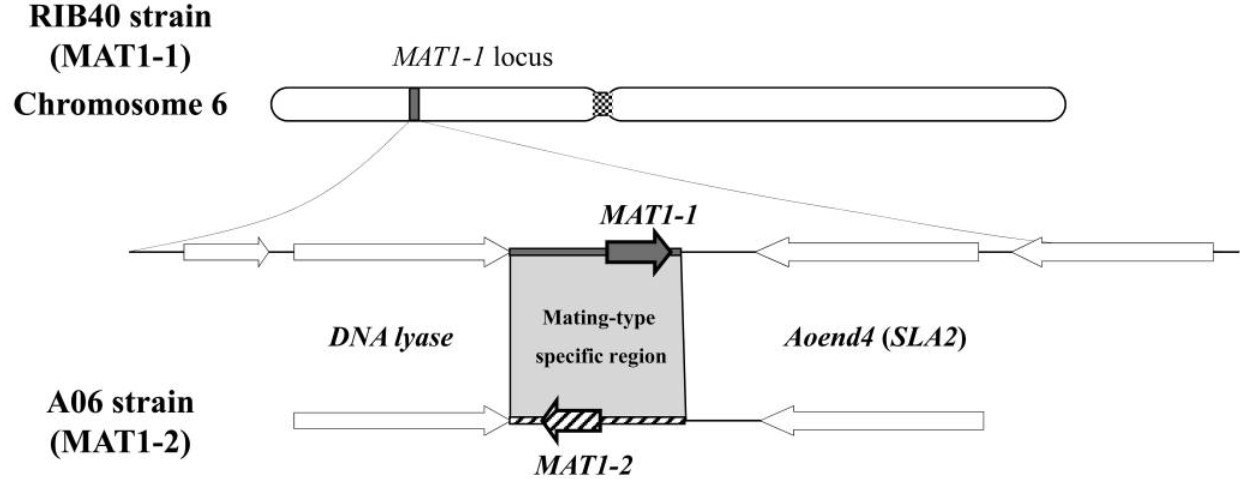Transcriptomic Analysis of Mating Type Gene Expression
The reproductive mode of fungi is diverse and can be broadly classified into two categories: asexual and sexual. Almost all fungi can reproduce sexually, but most of the time, fungi reproduce asexually. Sexual reproduction in fungi is mainly controlled by mating-type genes, which regulate the hormonal regulation mechanism of male and female gamete cooperation and hermaphroditic affinity cells, sex differentiation, and sexual development, as well as the regulation of ascospore formation. Therefore, the in-depth study of mating-type genes is essential for understanding the sexual reproduction pattern of fungi.
The emergence of mating-type genes is an essential time in the evolution of fungi. Studying the sequence characteristics of mating-type genes and their functions and regulatory processes during sexual reproduction is essential for understanding the kinship of fungi as well as the evolution and origin of fungi. Lifeasible can provide transcriptomic analysis of mating type gene expression of fungi to help customers conduct in-depth research on fungal sexual reproduction.
 Figure 1. Schematic arrangements of the MAT loci in A. oryzae strains RIB40 and AO6. (Yan D, et al., 2021)
Figure 1. Schematic arrangements of the MAT loci in A. oryzae strains RIB40 and AO6. (Yan D, et al., 2021)
- Analysis of mating type gene loci and structure.
Sexual reproduction in fungi is classified into homozygous and heterozygous cooperation according to whether self-fertility is possible. Homozygous cooperation means that a single strain can accomplish sexual reproduction, while heterozygous cooperation requires two sexual parents and strains together, i.e., different mating types are required. We analyzed the genetic structure of fungal mating type genes and their expression at the RNA level during additional growth and developmental periods by transcriptome sequencing data.
- Functional analysis of mating type genes.
The mating-type genes are not functionally conserved in different strains. Transcriptome analysis can support the functional study of mating-type genes and the discovery of upstream and downstream genes. We can analyze the transcriptomes associated with a variety of fungal mating-type genes to help our customers find genes with differential expression and perform mutation analysis on these genes to clarify the upstream regulators and downstream target genes of mating-type genes.
- Analysis of the regulation of sexual reproduction in fungi.
Fungal sexual reproduction alternates with asexual reproduction, and environmental-inducing factors influence the asexual reproduction process to initiate the sexual reproduction process. The mating type locus is the critical regulator controlling fungal mating, while the normal synthesis of pheromones and the specific recognition of corresponding receptors are only necessary. We can identify mating type-related pheromones in fungal sexual reproduction through transcriptomic analysis and explore the regulatory relationships between pheromones, pheromone receptor gene expression, and transcription factors encoded by mating type genes.
Lifeasible can study some fungi's mating type genes by transcriptomic analysis to clarify the effect of mating type genes in fungi on different stages of sexual reproduction. As your trusted partner, we can meet your fungal phylogenetic analysis needs and provide you with efficient, high-quality services. If you want to know the details, please contact us.
Reference
- Wada R, et al. (2012). "Presence and functionality of mating type genes in the supposedly asexual filamentous fungus Aspergillus oryzae." Appl Environ Microbiol. 78(8): 2819-29.
For research or industrial raw materials, not for personal medical use!
 Figure 1. Schematic arrangements of the MAT loci in A. oryzae strains RIB40 and AO6. (Yan D, et al., 2021)
Figure 1. Schematic arrangements of the MAT loci in A. oryzae strains RIB40 and AO6. (Yan D, et al., 2021)